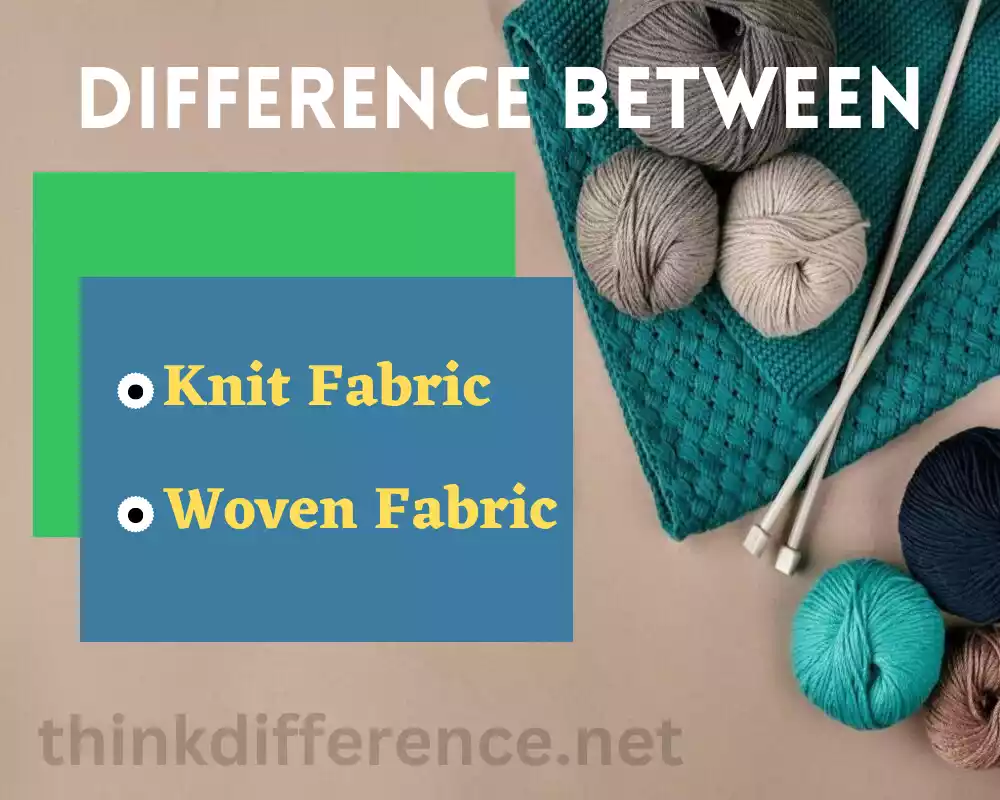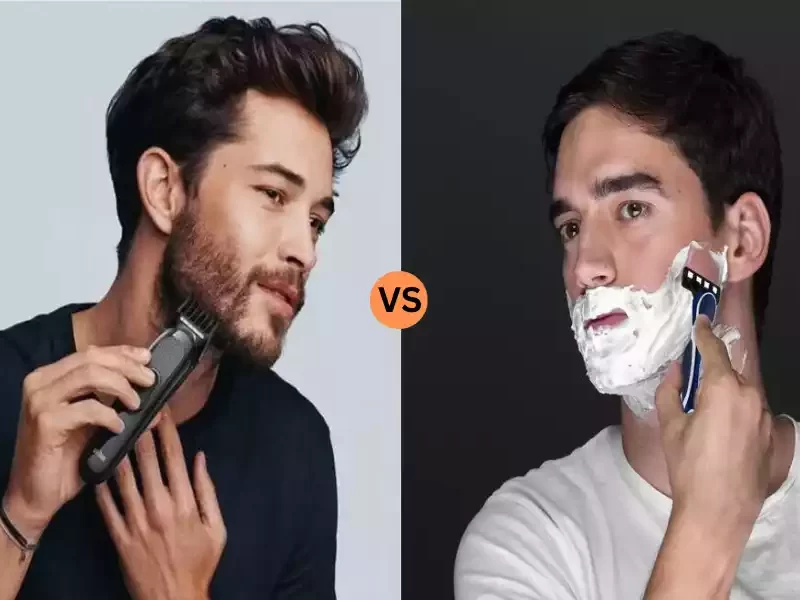A Definition of Knit and Woven Fabric
Knit Fabric:
Knit fabric is a textile created by weaving loops of thread or yarn together using either knitting machines or hand knitting techniques, commonly referred to as knitting techniques.
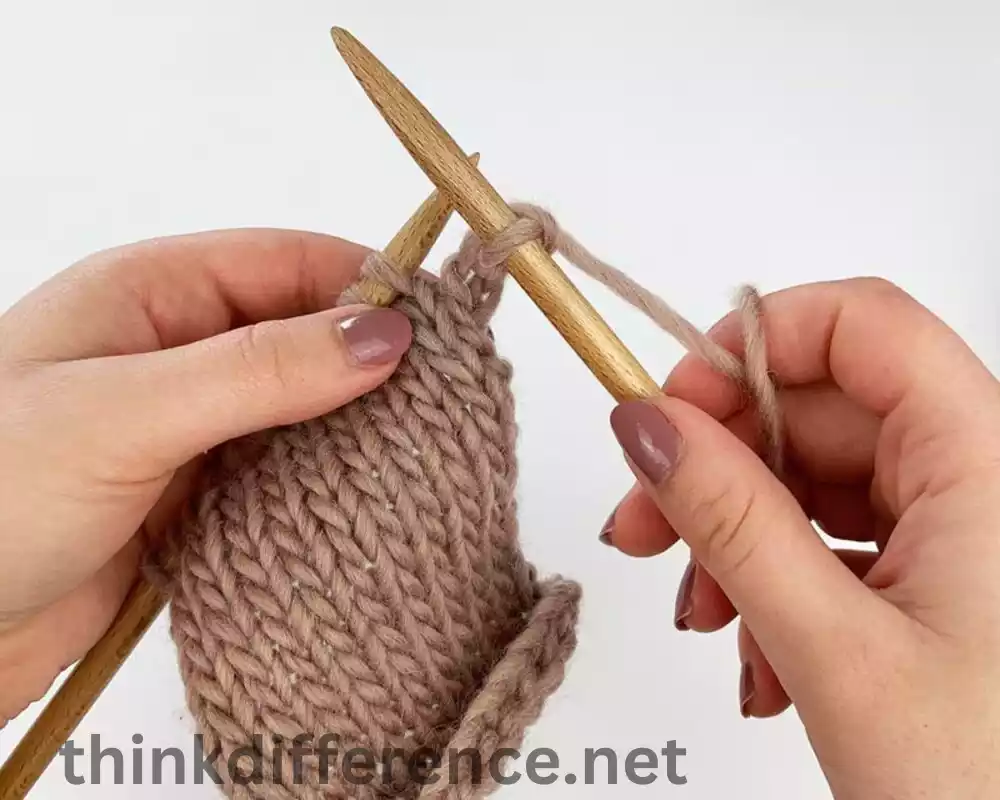
Knitted fabrics are known for their stretch ability due to the loops woven within, enabling it to stretch and recover more quickly for comfort and flexibility. Common fiber types used are polyester cotton wool which make this versatile fabric comfortable as clothing options such as T shirts sweaters activewear as well as undergarment accessories and even headgear.
Woven Fabric:
Woven fabric refers to textiles constructed by interlacing two or more threads or yarns at right angles to form fabric. The horizontal threads are known as weft or filling, while the vertical threads are called warp. The interlacing of these threads creates a structured and sturdy fabric with little to no stretch.
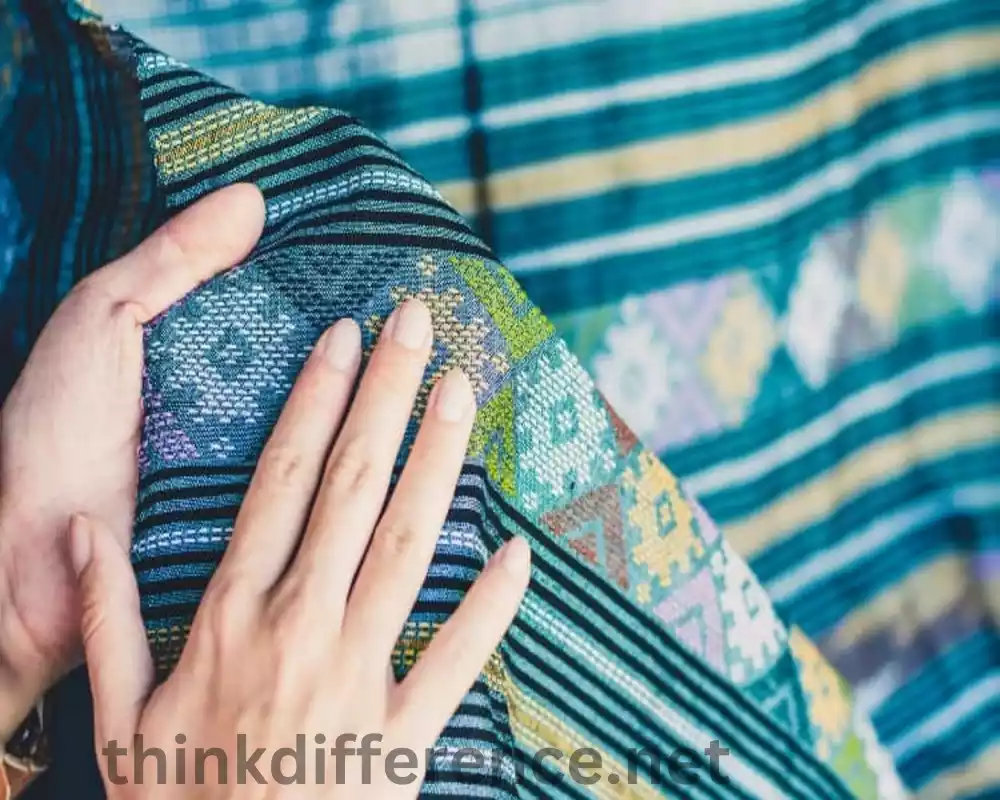
Woven fabrics are commonly produced on weaving looms, where the warp threads are held under tension while the weft threads are passed over and under them to create different weave patterns. Fabrics can be created using cotton, linen and synthetic yarns woven together. Fabrics can then be used to manufacture clothing such as shirts and trousers as well as home textiles, accessories, bags or any other number of goods that meet our everyday needs.
Importance of understanding the difference between Knit and Woven Fabric
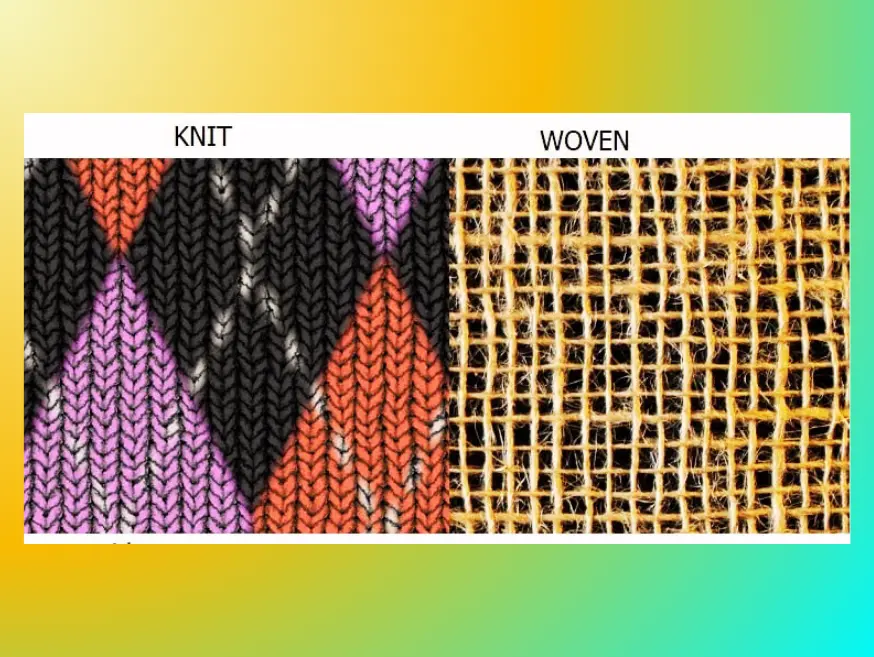
Understanding the differences between knitted and woven fabrics is necessary for several reasons, notably:
- Fabric Selection: Knowing the difference between knit and woven fabrics allows you to make informed decisions when choosing materials for different applications. Knit fabrics, with their stretch ability and flexibility, are suitable for items that require ease of movement and a close fit to the body, such as activewear or undergarments. Woven fabrics, on the other hand, are more structured and less stretchy, making them ideal for garments that require durability and shape retention, like shirts or trousers.
- Garment Fit and Comfort: Understanding the characteristics of knit and woven fabrics helps in achieving the desired fit and comfort in garments. Knit fabrics, with their stretch and recovery properties, conform closely to the body, providing a comfortable and form-fitting feel. Woven fabrics, although less stretchy, offer better shape stability, ensuring garments maintain their intended silhouette.
- Design and Styling: The difference between knit and woven fabrics also influences design choices and styling options. Knit fabrics often have more drape and are suitable for creating garments with a relaxed or body-hugging silhouette. Woven fabrics, with their inherent structure, allow for the creation of tailored and structured designs. Understanding these characteristics enables designers and manufacturers to choose the appropriate fabric for their desired aesthetic and functionality.
- Care and Maintenance: Knowledge of whether a fabric is knit or woven is essential for proper care and maintenance. Knit fabrics may require gentle washing and drying methods to prevent stretching or distortion, while woven fabrics may need ironing to maintain their crispness. Understanding these fabric-specific care requirements helps in prolonging the lifespan of garments and maintaining their original appearance.
- Production and Manufacturing: The distinction between knit and woven fabrics is crucial in the textile production process. Different machinery, techniques, and processes are used for knitting and weaving, and manufacturers need to understand these distinctions to select the appropriate equipment and production methods. It also affects factors such as yarn selection, dyeing, printing, and finishing processes specific to each fabric type.
Understanding the difference between knit and woven fabrics is vital for making informed choices in fabric selection, achieving desired garment fit and comfort, exploring design possibilities, ensuring proper care and maintenance, and optimizing production processes in the textile industry.
Structure and Formation
The structure and formation of knit and woven fabrics differ significantly:
Knit Fabric:
- Construction: Knit fabric is constructed by interlocking loops of yarn or thread. The loops are formed using knitting needles or knitting machines. The process involves pulling loops of yarn through existing loops to create a continuous fabric.
- Interlocking Stitches: The interlocking loops of knit fabric can be created in various stitch patterns, such as jersey, rib, cable, or jacquard. Each stitch pattern produces a distinct texture and appearance.
- Stretch ability: Knit fabrics are known for their stretch ability and flexibility. The loops allow the fabric to stretch in all directions, providing excellent freedom of movement and a close fit to the body.
- Yarn Orientation: In knit fabrics, the yarns follow a more meandering path due to the interlocking loops. This contributes to the fabric’s stretch and drape.
Woven Fabric:
- Construction: Woven fabric is constructed by interlacing two or more sets of yarn or threads at right angles to each other. The vertical threads, called warp, are held under tension on a loom, while the horizontal threads, known as weft or filling, are passed over and under the warp threads.
- Weave Patterns: The interlacing of warp and weft threads creates different weave patterns, such as plain weave, twill weave,
satin weave, or dobby weave. Each weave pattern produces distinctive properties in the fabric, including texture, durability, and drapability. - Sturdiness: Woven fabrics are generally sturdier and less stretchy compared to knits. The interlacing structure of the threads gives woven fabrics more stability and strength.
- Yarn Orientation: In woven fabrics, the warp and weft threads are typically perpendicular to each other, creating a grid-like structure. This regular and ordered arrangement contributes to the fabric’s stability and resistance to stretching.
Knit fabrics are constructed by interlocking loops of yarn, allowing for stretch and flexibility, while woven fabrics are created by interlacing warp and weft threads, resulting in a structured and sturdy fabric. The formation and arrangement of yarns significantly impact the characteristics and properties of the final fabric.
Characteristics
Knit and woven fabrics have distinct characteristics that set them apart:
Knit Fabric:
- Stretchability and Recovery: Knit fabrics are known for their stretchability. The interlocking loops allow the fabric to stretch in multiple directions, providing excellent flexibility and freedom of movement. Knit fabrics also have good recovery, meaning they return to their original shape after being stretched.
- Wrinkle Resistance: Knit fabrics tend to be more wrinkle-resistant compared to woven fabrics. The inherent stretchiness of knits allows them to bounce back and regain their shape, reducing the appearance of wrinkles.
- Breathability: Knit fabrics are generally more breathable than woven fabrics. The loops in knit fabrics create tiny air pockets that promote airflow, enhancing ventilation and moisture wicking. This makes knit fabrics comfortable to wear in various climates.
- Close Fit to the Body: Due to their stretchability and ability to conform to body contours, knit fabrics often provide a close fit. This attribute makes them suitable for garments that require a form-fitting or body-hugging silhouette.
Woven Fabric:
- Limited Stretchability: Woven fabrics have limited stretch compared to knits. The interlacing structure of warp and weft threads restricts their stretchiness. Woven fabrics may have slight give, but they do not have the same inherent stretch as knits.
- Prone to Wrinkling: Woven fabrics are more prone to wrinkling compared to knit fabrics. The absence of significant stretch makes woven fabrics susceptible to creasing and folding, resulting in more visible wrinkles.
- Less Breathable: Woven fabrics are generally less breathable than knits. The tightly woven structure limits airflow and ventilation, making woven fabrics less suitable for activities that require high breathability.
- Structured and Less Conforming: Woven fabrics have a structured nature and hold their shape well. They do not conform as closely to the body as knits, providing a more tailored and less body-hugging fit.
It’s important to note that these characteristics can vary depending on the specific construction, fiber content, and finishing treatments applied to the fabrics. These general traits give an overview of the typical properties associated with knit and woven fabrics.
Applications and Uses
Knit and woven fabrics have different applications and uses due to their distinct characteristics:
Knit Fabric:
- Clothing Items: Knit fabric can be used to produce clothing items such as T shirts, sweatshirts and sweaters. The stretchability and flexibility of knits make them ideal for garments that require ease of movement and a close fit to the body.
- Undergarments and Lingerie: Underwear such as bras, pants and undershirts often utilize knit fabrics in their construction. The softness and stretch of knits provide comfort and a good fit for intimate apparel.
- Accessories: Knit fabrics are also popular for accessories such as hats, scarves, gloves, and socks. The stretchiness of knits allows these accessories to fit snugly and comfortably.
Woven Fabric:
- Clothing Items: Clothing such as shirts, trousers and dresses are typically constructed out of fabrics woven together. The structured nature of woven fabrics provides durability and shape retention, making them suitable for tailored and structured garments.
- Upholstery and Home Textiles: Upholstery and home textiles such as curtains, drapes, upholstery covers, bed spreads and tablecloths often utilize fabrics made of woven fibers for production. The sturdiness and variety of weave patterns make woven fabrics suitable for these applications.
- Bags and Accessories: Woven fabrics find applications in bags and accessories such as handbags, backpacks, totes, and belts. The strength and structure of woven fabrics make them suitable for creating durable and functional accessories.
It’s worth mentioning that both knit and woven fabrics can be further enhanced with additional treatments, such as dyeing, printing, or coating, to expand their applications and create unique visual effects. The choice between knit and woven fabrics depends on the specific requirements of the end product, considering factors such as desired stretch, structure, drape, and durability.
Manufacturing Process
The manufacturing processes for knit and woven fabrics differ due to the distinct structures of the fabrics.
Here is an overview of the manufacturing processes for each:
Knit Fabric Manufacturing Process:
- Yarn Selection and Preparation: The process begins with selecting appropriate yarns based on the desired characteristics of the knit fabric. Yarns can be made from various fibers such as cotton, wool blends. The yarns may undergo treatments like spinning, twisting, or blending to achieve specific properties.
- Knitting Machines and Techniques: Knit fabric production involves the use of knitting machines or hand knitting techniques. Knitting machines range from basic single-needle machines to complex computerized models. The selected yarn is fed into the machine, and the machine forms interlocking loops to create the fabric structure. Various knitting techniques and stitch patterns can be employed to achieve different fabric textures and appearances.
- Finishing Processes: After the fabric is knitted, it undergoes finishing processes. This may include washing to remove any impurities, dyeing or printing to add color or patterns, and additional treatments like mechanical or chemical finishes to enhance the fabric’s properties. Finishing processes can improve the fabric’s appearance, durability, and performance.
Woven Fabric Manufacturing Process:
- Yarn Preparation: The process begins with preparing the warp and weft yarns. The yarns may be spun, twisted, or processed to achieve desired characteristics such as strength, smoothness, or texture. Warp yarns are wound onto a beam, while weft yarns are wound onto bobbins or shuttles.
- Weaving Looms and Techniques: The warp yarns are held under tension on a weaving loom, and the weft yarns are passed over and under the warp yarns in a specific pattern. The weaving loom can be either a traditional shuttle loom or a modern shuttle-less loom, such as rapier looms or air jet looms. The choice of weave pattern (such as plain, twill, satin) determines the structure and appearance of the woven fabric.
- Finishing Processes: Once the fabric is woven, it undergoes various finishing processes. This may involve washing to remove impurities, bleaching or dyeing to add color, printing to create patterns, and treatments such as calendering or starching to improve the fabric’s properties, texture, or appearance. Finishing processes can also include processes like cutting, sewing, or adding additional elements to transform the woven fabric into a final product.
The manufacturing processes for both knit and woven fabrics involve multiple steps and can vary depending on the specific fabric requirements, machinery, and technology used by manufacturers. These processes ensure that the fabric meets the desired specifications in terms of appearance, performance, and functionality.
Care and Maintenance
Care and maintenance practices for knit and woven fabrics can differ due to their distinct characteristics.
Here are some general guidelines for caring for and maintaining knit and woven fabrics:
Knit Fabric Care and Maintenance:
- Washing: Knit fabrics are generally best washed using a gentle cycle or hand-washing to prevent excessive stretching or damage to the fabric’s structure. It is recommended to turn the garment inside out before washing to protect the outer surface. Use mild detergent and cold or lukewarm water, as hot water can cause shrinkage or distortion.
- Drying: Knit fabrics should be air-dried or tumble-dried on a low heat setting. Avoid wringing or twisting the fabric to prevent stretching. Lay the garment flat to dry or hang it on a clothesline, avoiding direct sunlight.
- Ironing: Knit fabrics typically do not require ironing if properly dried. If necessary, use a low heat setting and steam or iron on the reverse side of the fabric or place a pressing cloth between the fabric and the iron to avoid damage.
- Storage: Fold knit garments neatly and store them in a cool, dry place. Avoid hanging heavy knit items, as they may stretch or lose their shape. If hanging is necessary, use padded hangers or fold the garment over the hanger to distribute the weight evenly.
Woven Fabric Care and Maintenance:
- Washing: Woven fabrics can generally withstand regular machine washing. Check the care instructions on the garment’s label for specific recommendations regarding water temperature, detergent, and any special considerations. Separating colors and washing similar fabrics together is recommended to prevent color bleeding or damage.
- Drying: Woven fabrics can be air-dried or tumble-dried on a low to moderate heat setting. Remove the fabric from the dryer promptly to minimize wrinkling. Line drying can be suitable for lightweight woven fabrics, but heavy fabrics may sag and lose their shape.
- Ironing: Woven fabrics often benefit from ironing to maintain a crisp appearance. Follow the fabric’s care instructions for the appropriate ironing temperature and use steam or a pressing cloth if needed. Iron the fabric while it is slightly damp or use a spray bottle to add moisture and ease out wrinkles.
- Storage: Woven garments can be hung on sturdy hangers to help maintain their shape. Avoid overcrowding in the closet to prevent wrinkles. Fold woven fabrics neatly if storing them in drawers or boxes, and protect them from moisture and pests.
It is important to note that the specific care instructions may vary depending on the fabric composition, finishes, and any additional treatments applied to the fabric. Always refer to the care labels or manufacturer’s instructions for the best care practices for each individual garment.
Comparison table of Knit and Woven Fabrics
Here is a comparison table highlighting the key differences between Knit and Woven Fabrics:
| Aspect | Knit Fabric | Woven Fabric |
|---|---|---|
| Structure | Interlocking loops of yarn | Interlacing of warp and weft threads |
| Stretchability | High stretchability in all directions | Limited stretch |
| Appearance | Textured and dimensional | Flatter and smoother |
| Production | Knitting machines or hand knitting | Looms |
| Characteristics | Stretchy, soft, breathable, wrinkle-resistant | Structured, durable, stable, less prone to wrinkling |
| Uses | T-shirts, activewear, undergarments, accessories | Clothing, upholstery, home textiles, accessories |
| Care | Gentle washing, air-drying, minimal ironing | Regular machine washing, ironing as needed |
| Cost | Varies based on yarn type and production method | Varies based on fabric type and weave complexity |
Factors to Consider When Choosing Between Knit and Woven Fabrics
Consider several key considerations when making the choice between knitted and woven fabrics for any given application or project. Including these key considerations:
- Stretch and Flexibility: Knit fabrics have inherent stretch and flexibility, allowing for ease of movement and a close fit to the body. Consider whether the fabric needs to accommodate body movements or require a more structured fit.
- Structure and Drape: Woven fabrics have a more structured and stable nature, which can result in garments or projects with a crisper appearance and defined shape. Knit fabrics, on the other hand, have a softer drape and may conform more closely to the body. Consider the desired aesthetic and structure of the final product.
- Breathability and Comfort: Knit fabrics generally offer better breathability due to their inherent stretch and the presence of small air pockets within the fabric structure. Consider the climate and intended use of the fabric to ensure optimal comfort and breathability.
- Durability and Stability: Woven fabrics tend to be more durable and stable compared to knits. They can withstand greater stress and abrasion, making them suitable for applications that require higher durability, such as upholstery or heavy-duty garments. Consider the expected wear and tear on the fabric and choose accordingly.
- Wrinkle Resistance: Knit fabrics are typically more wrinkle-resistant than woven fabrics. If maintaining a wrinkle-free appearance is important for the intended use of the fabric, consider the fabric’s ability to resist wrinkling.
- Production and Cost: Consider the production process and cost implications. Knit fabrics may require specialized knitting machines or hand-knitting techniques, which can affect production time and cost. Woven fabrics can be produced on conventional looms and may be more readily available and cost-effective.
- Design and Styling: The choice between knit and woven fabrics can significantly impact the design and styling possibilities. Knit fabrics often lend themselves to more casual, stretchy, and body-hugging designs, while woven fabrics are commonly used for tailored, structured, and formal garments.
- Care and Maintenance: Consider the care requirements of the fabric. Knit fabrics may require gentler washing methods and have specific drying recommendations to maintain their stretch and shape, while woven fabrics may be more versatile in terms of washing and maintenance.
Consideration of these factors will allow you to select an ideal fabric for your project or application.
Summary
Both Knit and Woven fabrics have their unique properties and applications. Knit fabrics offer stretch and comfort, making them ideal for casual and sportswear, while woven fabrics provide durability and elegance, making them suitable for formal wear and home furnishings. Understanding the differences between these two types of fabrics allows designers and consumers to make informed choices based on their specific needs and preferences.

